#Agricultural Engineering
Explore tagged Tumblr posts
Photo
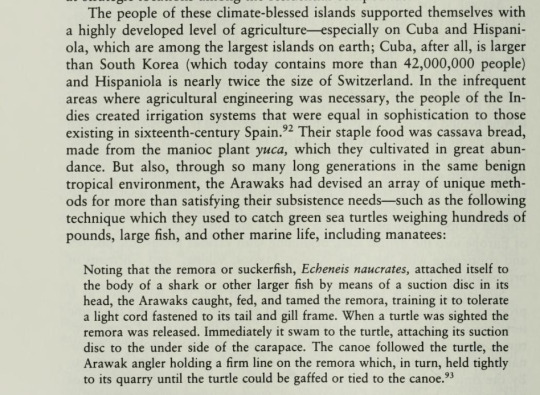

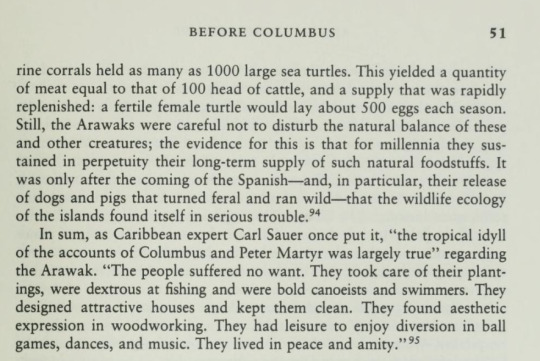
American Holocaust — David E. Stannard
#cuba#hispaniola#agriculture#irrigation systems#agricultural engineering#arawaks#yuca#wildlife ecology#american holocaust#American Holocaust: The Conquest of the New World#holocaust#David E. Stannard#history#nonfiction#spanish#north america#south america#indigenous#atypicalreads#nsnv#colonialism#mesoamerica
5 notes
·
View notes
Text
Careers in Agricultural Engineering: Opportunities and Pathways
Introduction
As agriculture continues to evolve with technological advancements, agricultural engineering plays a pivotal role in shaping the future of farming. But what is agricultural engineering? It’s a field dedicated to applying engineering principles to the agricultural sector, enhancing the efficiency, sustainability, and productivity of agricultural practices.
For those interested in both technology and agriculture, a BTech in Agricultural Engineering offers an exciting pathway to contribute to innovations in farming. This program merges engineering concepts with agricultural sciences, equipping students with the tools to tackle modern farming challenges.
Agricultural engineering courses encompass a wide range of topics, including soil management, irrigation systems, agricultural machinery, and post-harvest technology. These courses are designed to prepare students for roles in precision agriculture, sustainable farming, and agricultural technology development.
When it comes to choosing the right educational institution, the best colleges for agricultural engineering in India provide comprehensive programs that balance theory and hands-on experience. In this blog, we’ll delve into the importance of agricultural engineering, the courses available, and how this field is transforming the landscape of agriculture.

What is Agricultural Engineering?
Agricultural engineering is a field that combines engineering principles with agricultural sciences to enhance the efficiency and sustainability of farming practices. It encompasses the design, development, and implementation of technology and systems that improve agricultural productivity, reduce waste, and promote environmental sustainability. This interdisciplinary field integrates mechanical, civil, and electrical engineering with biology and environmental science to address the diverse challenges in agriculture.
Core Areas of Agricultural Engineering
1. Machinery and Equipment Design: Agricultural engineers work on developing and optimizing machinery and equipment used in farming. This includes tractors, harvesters, and irrigation systems. The goal is to design equipment that increases efficiency, reduces labor, and minimizes environmental impact.
2. Irrigation and Water Management: Effective water management is crucial for agriculture. Agricultural engineers design advanced irrigation systems that optimize water usage, reduce wastage, and ensure crops receive the right amount of water. This involves developing technologies such as drip irrigation and automated irrigation systems.
3. Soil and Water Conservation: Soil health is vital for successful farming. Engineers in this field focus on methods to prevent soil erosion, improve soil fertility, and manage water resources. Techniques like contour plowing, terracing, and soil moisture management are key areas of study.
4. Agricultural Structures: Designing and constructing agricultural buildings, such as barns, greenhouses, and storage facilities, falls under this category. These structures must be functional, durable, and capable of protecting crops and livestock from environmental factors.
5. Post-Harvest Technology: After harvesting, proper handling and processing of agricultural products are essential to prevent spoilage and ensure quality. Agricultural engineers develop technologies for drying, storing, and processing crops to maximize shelf life and minimize losses.
Educational Pathways in Agricultural Engineering
A career in agricultural engineering typically starts with a BTech in Agricultural Engineering or a similar undergraduate degree. This program provides a solid foundation in engineering principles, agricultural science, and practical skills. Students learn about crop production, soil management, irrigation, and the design of agricultural machinery.
Advanced studies, such as master’s and doctoral programs, allow for specialization in areas like precision agriculture, sustainable farming practices, or agricultural robotics. These programs offer deeper insights into specific challenges and technologies in the field.
Career Opportunities in Agricultural Engineering
Graduates with a background in agricultural engineering have a wide range of career opportunities. They can work in:
Farm Management: Implementing and managing technology and systems on farms to improve productivity and sustainability.
Agricultural Equipment Manufacturing: Designing and developing machinery and equipment for the agriculture industry.
Environmental Consulting: Advising on soil and water conservation practices, and developing strategies for sustainable farming.
Research and Development: Working in research institutions or companies to innovate new technologies and solutions for agriculture.
The Future of Agricultural Engineering
The field of agricultural engineering is rapidly evolving with advancements in technology. Innovations such as precision farming, which uses data and sensors to optimize crop management, and the development of autonomous farming equipment, are transforming agriculture. Engineers in this field are also working on sustainable practices to address the challenges posed by climate change and resource depletion.
The integration of technology in agriculture is crucial for meeting the growing food demands of the global population while preserving natural resources. Agricultural engineers are at the forefront of this transformation, driving progress and creating solutions that ensure a sustainable future for farming.
Conclusion
Agricultural engineering is a dynamic and essential field that merges technology with agriculture to improve farming practices and ensure food security. By focusing on machinery, irrigation, soil management, and post-harvest technology, agricultural engineers play a crucial role in advancing the agricultural industry. With a range of career opportunities and a promising future, this field offers a rewarding path for those passionate about technology and agriculture.
0 notes
Text
From Farm Machinery to Food Safety: Understanding the Different Types of Agricultural Engineering
Agricultural engineering, also known as agricultural and biosystems engineering, is the field of study and application of engineering science and designs principles for agriculture purposes, combining the various disciplines of mechanical, civil, electrical, food science, environmental, software, and chemical engineering to improve the efficiency of farms and agribusiness enterprises as well as to ensure sustainability of natural and renewable resources. In this blog, we will explore the world of Agricultural Engineering, a crucial discipline that combines engineering principles with agricultural practices to solve industry challenges. We will delve into what this field entails, appreciate its rich history, and examine the various roles and responsibilities of agricultural engineers. Additionally, we will investigate the diverse types of agricultural engineering and their impact on modern farming.
Agricultural Engineering: A Brief History
The field of Agricultural Engineering has a rich and varied history. In the early 20th century, agricultural engineering was largely focused on engine-powered machinery for farms, like tractors and harvesters. Over time, it evolved to address a variety of other issues, such as irrigation and drainage, farm structures, and soil and water conservation.
One early achievement in agricultural engineering was the development of the grain elevator in the late 1840s, which paved the way for more efficient grain storage and transport. This innovation significantly improved the handling and movement of large quantities of grain, making the process faster and less labour-intensive.
As the 20th century progressed, agricultural engineers continued to develop technologies and practices that enhanced agricultural productivity and sustainability. From precision irrigation systems to advanced soil management techniques, the field has continually adapted to meet the changing needs of agriculture.
Understanding the Types of Agricultural Engineering
Agricultural engineering plays a pivotal role in the modernization and sustainability of farming practices. It combines engineering principles with agricultural knowledge to solve problems and enhance productivity.
Here’s an overview of the main types of agricultural engineering:
Farm Power and Machinery Engineering
The field of Farm Power and Machinery focuses on the design, development, and maintenance of machinery used in farming. It includes:
Tractors: Essential for various farm tasks like ploughing, planting, and harvesting.For example, John Deere is a leading manufacturer of innovative farm machinery.
Harvesters: Machines that efficiently gather crops from the fields,such as the New Holland CR Revelation series.
Irrigation Systems: Devices and infrastructure that provide water to crops, improving yield and conserving water,like those developed by Netafim, a global leader in precision irrigation solutions.
Advancements in this field aim to increase productivity, reduce manual labour, and enhance the efficiency of farming operations.
Soil and Water ConservationEngineering
Soil and water are the two basic natural resources that sustain life on the Earth. The soil, plant and water interactions are pivotal to enhance productivity to meet the challenge of food security.
Soil and water engineering deals with the sustainable management and conservation of soil and water resources. Key areas include:
Irrigation Systems: Technologies designed to optimize water usage for crops.The International Water Management Institute (IWMI) focuses on sustainable water use in agriculture.
Drainage Systems: Solutions to remove excess water from soil, preventing crop damage.
Soil Erosion Control: Methods to prevent soil degradation and maintain soil health.
This type of engineering ensures that natural resources are used efficiently and sustainably, supporting long-term agricultural productivity.

Food and Bioprocess Engineering
The Role of Food and Bioprocess Engineers in the Growing Food Industry
The food industry, a significant part of the nation's economy, is growing steadily due to changing consumer needs and increased awareness of nutritional and environmental issues. Food and bioprocess engineers play a crucial role in this sector by developing processes to convert raw farm materials into food products.
Key Areas of Focus:
Application of Engineering Principles
Processing and production of food.
Ensuring food safety and health benefits.
Innovative Food Packaging
Developing new methods to improve food packaging.
Improving Food Quality
Working on techniques to enhance the quality of food products.
Food Storage Practices
Developing better food storage methods to prolong shelf life and maintain quality.
Enhancing Food Production Techniques
Creating more efficient and sustainable food production processes.
Handling Processing Wastes
Managing waste generated from food processing.
Finding alternative uses for biological materials (e.g., using newspaper and soy flour for construction materials or corn stalks for chemical absorbent pads).
Food and bioprocess engineers are vital in transforming raw agricultural products into food and other bioproducts, contributing to the industry's innovation and sustainability.
Agricultural Structures and Environmental Engineering
Agricultural Structures and Environmental Control, revolves around the development of structures and systems designed to facilitate agricultural practices whilst managing the environmental impact.This field involves the design and construction of agricultural structures such as barns, silos, and greenhouses. It includes:
Sustainable Designs: Structures that minimize environmental impact and maximize energy efficiency.
Animal Housing: Facilities designed to ensure the welfare and productivity of livestock.
Crop Storage: Solutions to safely store crops and protect them from pests and spoilage.
These structures play a crucial role in protecting crops and livestock, ensuring a steady food supply.
Energy in Agriculture
Agriculture relies on energy at every stage of growth, involving both direct and indirect use:
Direct Use
Energy is used to operate equipment, manage water, irrigate, and harvest. This includes:Electricity ,Fuel ,Wind and Solar Biomass
Indirect Use
Energy is used in the form of fertilizers, pesticides, and other inputs. For instance, fertilizers contributed 68.4% of indirect energy use in 2009-10, but only 60.61% in 2019-20.
Improving Energy Efficiency and Sustainability
Analyzing energy use can help enhance efficiency and sustainability in agriculture. Some ways to reduce energy use include:
Nutrient Management
Efficiently use nutrients, especially nitrogen fertilizer, through soil testing, banding fertilizers and pesticides, and precision agriculture.
Energy Crops
Grow low-cost, low-maintenance crops processed into renewable biofuels like pellets, bioethanol, or biogas. These fuels can be burned to generate heat or electricity.
Alternative Energy Sources and Technologies
Exploring alternative energy sources and technologies can make farming more sustainable. This includes:
Biofuels: Renewable fuels derived from agricultural products.POETis one of the world’s largest producers of biofuels.
Solar Energy: Solar panels and other technologies to power farm operations,
like those implemented by Solar Agriculture
Wind Energy: Wind turbines to generate electricity for agricultural use.
Utilizing renewable energy sources reduces the carbon footprint of agriculture and promotes sustainable farming practices.
Agricultural Systems and Automation
This modern branch integrates technology and automation into farming. Key components include:
Drones: Used for monitoring crops, spraying pesticides, and gathering data.DJI Agriculture offers advanced agricultural drone solutions.
Robotics: Automated systems for planting, weeding, and harvesting.
Iron Ox uses robotics to optimize indoor farming.
Precision Agriculture: Data-driven approaches to optimize farming practices and improve crop yield.Automation and precision agriculture enhance accuracy, reduce labour costs, and increase efficiency in farming.such as those provided by Trimble Agriculture.
Animal and Livestock Engineering
Animal and livestock engineering focuses on the systems and equipment needed for managing livestock. It includes:
Feeding Systems: Automated and efficient ways to feed animals,like those from Lely, which specializes in robotic milking and feeding systems.
Housing: Designing comfortable and productive living environments for animals.such as Anaergia's biogas systems.
Waste Management: Solutions to handle and recycle animal waste sustainably,such as Anaergia's biogas systems.
Ensuring the well-being of livestock improves productivity and supports sustainable animal husbandry.
Examples of Agricultural Engineering
Assuming these categories, we can find numerous real-world examples of agricultural engineering projects. For instance, in the category of farm power and machinery ,the use of drones in agriculture has significantly enhanced efficiency in crop monitoring and treatment applications.
In the area of structures and environmental control, vertical farming stands out as a prominent example, involving the production of food in vertically stacked layers.
The development and management of high-efficiency drip irrigation systems in regions with water scarcity are prime examples of soil and water conservation efforts.
In the realm of food and bioprocess engineering, modified atmospheric packaging is a well-known example, designed to extend the shelf life of food products.
Finally, in all these examples, the principles of agricultural engineering are applied to solving real-world problems, making farming and food production more efficient and sustainable. This is the true essence of agricultural engineering.
How Different Types of Agricultural Engineering Interact
These types of agricultural engineering are not isolated; they interact with each other in meaningful ways. For instance, designing a new high-efficiency irrigation system (soil and water conservation) might require the development of a specialized pumping station (farm power and machinery). Creating a vertical farm (agricultural structures and environmental control) involves implementing innovative climate control measures to maintain crop health (soil and water conservation) and employing advanced processing techniques to extend the harvest's shelf life (food and bioprocess engineering)
Conclusion
Agricultural engineering is a diverse and dynamic field that addresses various challenges in modern farming. By leveraging engineering principles, it enhances efficiency, productivity, and sustainability in agriculture. Whether it’s through advanced machinery, sustainable resource management, or innovative technologies, agricultural engineering continues to drive the evolution of farming practices to meet the needs of a growing global population.It's interesting to note that agricultural engineering not only focuses on creating highly efficient farming methods but also concerns itself with confronting serious global issues including climate change, overall sustainability, and food scarcity.
#Agricultural engineering#Agricultural engineering Conference#Agricultural engineering Conference Dubai
0 notes
Text
B.Tech agriculture colleges in coimbatore | Best Engineering Colleges
Coimbatore, P. P. G. Institute of Technology (PPGIT) is distinguished among the best B.Tech agriculture colleges in Tamil Nadu. Known for its robust agricultural engineering program, PPGIT offers a comprehensive curriculum that combines theoretical knowledge with practical applications. The college boasts state-of-the-art facilities, including agricultural laboratories, research centers, and experimental farms, providing students with hands-on learning experiences. PPGIT's experienced faculty members are dedicated to fostering innovation and sustainable agricultural practices, preparing students for diverse careers in the agricultural sector. With a strong emphasis on practical skills and industry exposure, PPGIT ensures graduates are well-equipped to address contemporary challenges in agriculture and agri-business.
#btech agriculture colleges in coimbatore#best engineering colleges in coimbatore#engineering colleges in tamilnadu#agricultural engineering
0 notes
Text
Electronic “Soil” Enhances Crop Growth - Technology Org
New Post has been published on https://thedigitalinsider.com/electronic-soil-enhances-crop-growth-technology-org/
Electronic “Soil” Enhances Crop Growth - Technology Org
Crops – barley seedlings – grow on average 50% more when their root system is stimulated electrically through a new cultivation substrate.
In a study published in the journal PNAS, researchers from Linköping University have developed an electrically conductive “soil” for soilless cultivation, known as hydroponics
Eleni Stavrinidou, senior associate professor and supervisor of the study, and Alexandra Sandéhn, PhD student, one of the lead authors, connect the eSoil to a low power source for stimulating plant growth. Image credit: Thor Balkhed/Linköping University
“The world population is increasing, and we also have climate change. So it’s clear that we won’t be able to cover the food demands of the planet with only the already existing agricultural methods. But with hydroponics we can grow food also in urban environments in very controlled settings,” says Eleni Stavrinidou, associate professor at the Laboratory of Organic Electronics at Linköping University, and leader of the Electronic Plants group.
Her research group has now developed an electrically conductive cultivation substrate tailored to hydroponic cultivation which they call eSoil. The Linköping University researchers have shown that barley seedlings grown in the conductive “soil” grew up to 50% more in 15 days when their roots were stimulated electrically.
Soilless cultivation
Hydroponic cultivation means that plants grow without soil, needing only water, nutrients and something their roots can attach to – a substrate. It is a closed system that enables water recirculation so that each seedling gets exactly the nutrients it needs.
Therefore, very little water is required and all nutrients remain in the system, which is not possible in traditional cultivation.
Eleni Stavrinidou, senior associate professor at the Laboratory of Organic Electronics. Image credit: Thor Balkhed / Linköping University
Hydroponics also enables vertical cultivation in large towers to maximise space efficiency. Crops already being cultivated in this manner include lettuce, herbs and some vegetables. Grains are not typically grown in hydroponics apart for their use as fodder.
In this study the researchers show that barley seedlings can be cultivated using hydroponics and that they have a better growth rate thanks to electrical stimulation.
“In this way, we can get seedlings to grow faster with less resources. We don’t yet know how it actually works, which biological mechanisms that are involved. What we have found is that seedlings process nitrogen more effectively, but it’s not clear yet how the electrical stimulation impacts this process,” says Eleni Starvrinidou.
Contribute to food security
Mineral wool is often used as cultivation substrate in hydroponics. Not only is this non-biodegradable, it is also produced with a very energy intensive process.
The electronic cultivation substrate eSoil is made of cellulose, the most abundant biopolymer, mixed with a conductive polymer called PEDOT. This combination as such is not new, but this is the first time it has been used for plant cultivation and for creating an interface for plants in this manner.
Previous research has used high voltage to stimulate the roots. The advantage of the Linköping researchers’ “soil” is that it has very low energy consumption and no high voltage danger. Eleni Stavrinidou believes that the new study will open the pathway for new research areas to develop further hydroponic cultivation.
“We can’t say that hydroponics will solve the problem of food security. But it can definitely help particularly in areas with little arable land and with harsh environmental conditions.”
The study was funded by the Knut and Alice Wallenberg Foundation through the Wallenberg Wood Science Centre, the Swedish Research Council, the EU Horizon 2020 Framework Programme, the Swedish Foundation for Strategic Research and the Strategic Research Advanced Functional Materials, AFM, at Linköping University.
Article: eSoil: Low power bioelectronic growth scaffold enhances crop seedlings growth; Vasileios K. Oikonomou, Miriam Huerta, Alexandra Sandéhn, Till Dreier, Yohann Daguerre, Hyungwoo Lim, Magnus Berggren, Eleni Pavlopoulou, Torgny Näsholm, Martin Bech, Eleni Stavrinidou; Proceedings of the National Academy of Sciences (PNAS); published online 26 December 2023. DOI: 10.1073/pnas.2304135120
Written by Anders Törneholm
Source: Linköping University
You can offer your link to a page which is relevant to the topic of this post.
#2023#agricultural engineering#Article#biodegradable#Biotechnology news#cellulose#change#Chemistry & materials science news#Classical physics news#climate#climate change#december#efficiency#electrical stimulation#electronic#Electronics#energy#energy consumption#Environmental#eu#Featured life sciences news#Featured physics news#Featured technology news#Food#Foundation#framework#growth#Horizon#how#hydroponics
0 notes
Text
0 notes
Text

The world of tomorrow is taking form today. Davidson Chemical Corporation ad - 1943.
#vintage illustration#vintage advertising#chemical companies#chemistry#chemical products#chemists#chemical testing#technology#science#scientists#chemical engineering#chemicals#american industry#life during wartime#ww2#wwii#wwii era#ww2 era#the 40s#the 1940s#davidson chemical corporation#agriculture
5 notes
·
View notes
Text

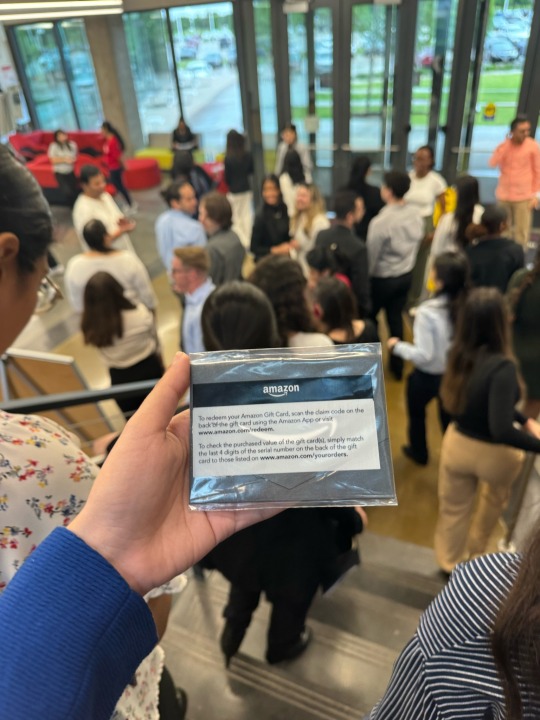






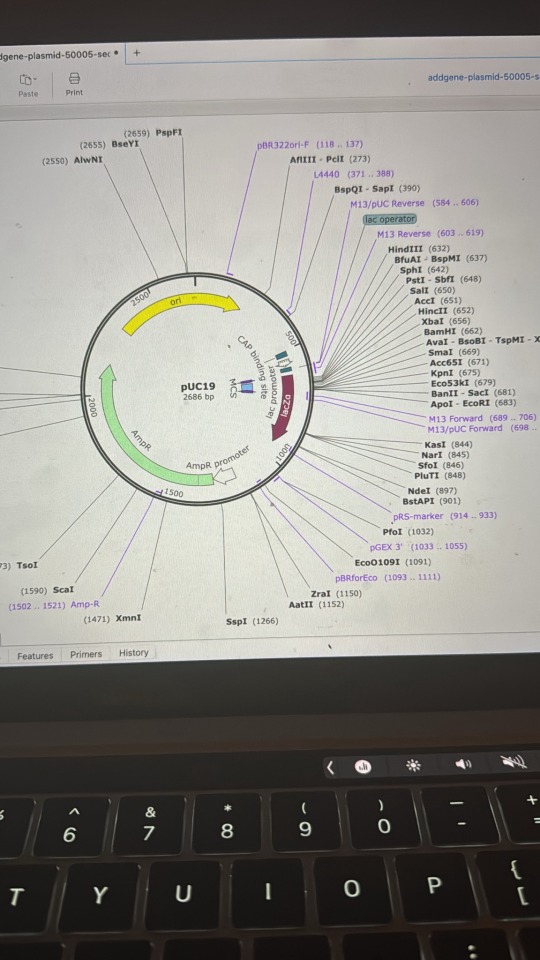

#books & libraries#study motivation#college#studyspo#studygram#studyblr#capstone#research#undergraduate#engineering#agriculture#plants#finals#poster
3 notes
·
View notes
Text
FDA Finds Unexpected Antibiotic Resistance Genes in 'Gene-Edited' Dehorned Cattle
19 notes
·
View notes
Text
I'm listening to the last podcast on the left episode on la llorona and they've gotten into the mesoamerican mythos and history behind the story and I keep wincing because they keep getting shit wrong
#like im no academic#but i have an interest in aztec culture and history#and like not even the nahuatl pronunciations#the very broad strokes are correct but the nuance and detail theyre trying to add is all wrong#stop trying to rehabilitate the Aztec empire by downplaying the violence of their society#and calling it adding nuance and complexity and actually add nuance abd complexity#the aztec empire was an EMPIRE with all the incredible violence that implied#they werent helpless victims#they were an extremely powerful empire that subjugated surrounding cultures through incredible violence#just like the fucking romans#and the aztecs maintained social control over their subjects through human sacrifice#of whom we literally have the thousands of remains#did they deserve the genocide and centurieof subjugation the spanish did to them?#NO!#no one deserves the horrors of colonization#they also incredibly detailed astronomical knowledge#an incredibly complex calendar and religion#incredible feats of agricultural engineering through canals and chinampas and actual running water#a society where land was held abd farmed in common#complex weaving and dying crafts#and a MASSIVE trade network that stretched from the great lakes to the andes#the bloody and horrific human sacrifice was just a part#just like colonization and antisemitism and violence are part of the catholic church#they can commit incredible acts of violence and also create incredible things worth preserving#like the Catholic church#and thats not even touching on how a people are not their state and a state is not a people group#im just .... i saw people on tiktok saying the aztecs didn't practice human sacrifice a couple years ago#and i haventbeen the same since#maybe ill make a post about all this some day#my posts
4 notes
·
View notes
Text
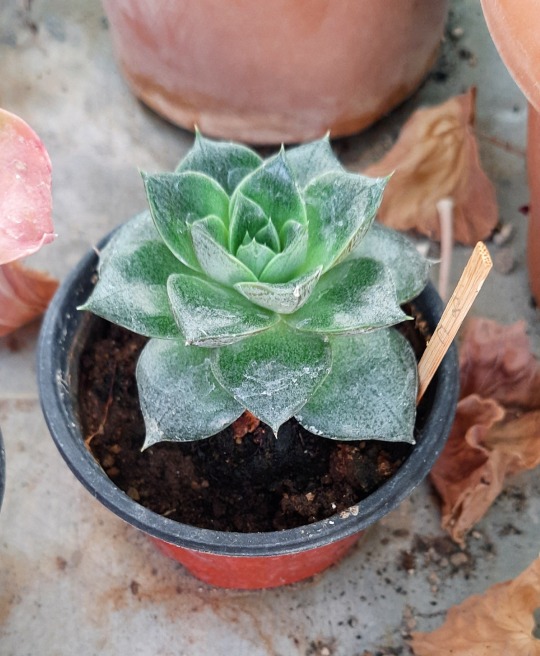
If you're a biology student and doing your internship in agricultural engineering, it's being way more difficult than you expected.
Both garden plants and fungus/bacterium studies are followed in this laboratory. I have been seeding bacteria, purifying fungal strains, taking care of plants and doing more.
I have learnt so many things, I got new aspects to the biology. But the most important thing was to learn how to believe yourself.
I would like to talk about it in another post so soon.
Hope everyone is doing well.
I know I do not post regularly and frequently, but I'm doing my best.
Sorry for these delays.
I'll take care of everything so soon.
#evesprettylittlediaryy#study motivation#studyblr#student#study aesthetic#study blog#study inspiration#study notes#studygram#studying#internship#biology#agriculture#engineering
4 notes
·
View notes
Text
TAEVision 3D Design Applications [Auto] [Agri] Automotive Agriculture Farm Farms Farming Forest Dodge RAM Trucks PickUp OffRoad GCWR 3500 Laramie Red Pearl ▸ TAEVision Engineering on Pinterest [Auto] ▸ TAEVision Engineering on Google Photos [Auto] ▸ TAEVision Engineering on Pinterest [Agri] ▸ TAEVision Engineering on Google Photos [Agri]

Data 438 - Jul 18, 2023
#TAEVision#engineering#3d#mechanicaldesign#automotive#agriculture#farm#farms#farming#forest ...#Dodge#RAM#Dodge RAM#trucks#pickup#offroad#GCWR 3500#Laramie Red Pearl
2 notes
·
View notes
Text
some thoughts
I'm a bit sad na nalilimitahan ang creativity ng tools like readable or hemingway.
Meron akong sinulat lately about SDGs and pinaulit 'yun sa akin kasi bagsak ang grade sa readable. I wonder how important 'yung mga gano'ng bagay in the bigger scheme of things.
The sentences were short naman. Kaso the words were long kaya sinasabi niya na mahirap basahin 'yung piece. Also, considered difficult words 'yung karamihan, hard to understand daw. For example, "regenerative farming," "biodiversity," "ecological health," "land management practices," at "sustainability." Parang dapat, ELI5 lang para safe.
Posible ring ako 'yung anomaly. Ayoko ng simpleng sentences e. Gusto ko, technical. 😂
Pero gusto ko na lang siyang matapos at matanggal sa to-dos so naging "humans are harming forests" na lang 'yung mga sentence.
#buti walang readable dun sa isang work#search engine optimization pa lang ang haba na#e buti nga may acronym yon#pano naman ang regenerative agriculture#writing
4 notes
·
View notes
Text
This has to do with how water runoff works. If you have a relatively flat surface, water will flow over it fairly quickly, and won't have time to really settle in and sink into the ground, like how water flows smoothly over a table. If you add some roughness to that surface, and specifically add some places for the water to pool, then some water flows over the top, but only once it's filled up the holes, like pouring water over a pebbled surface.
The crescent shapes help with this, as their geometry kinda "catches" the water, making lots and lots of little puddles (the best way to orient the crescents depends on wind, maybe? Or could be the slope of the hill, I'm not sure. But imperfect crescents are better than none). These puddles provide a place for growth - algae, seeds, moss, bird poop, whatever - and that growth eventually turns into plants with roots. Plants with roots help stabilize the soil, which makes it easier for even more plants to grow.
It's kinda like erosion, a little bit. Or the Dust Bowl, for Americans. When you have no topsoil and you have nothing holding the ground together, it's unstable. You try to put some seeds in there (or some seeds blow in on the wind, really) and those seeds get kicked around. Even if they germinate (which can be hard if they don't have enough water to let them know it's safe to grow), they don't get the chance to put roots down because they just keep moving. Roots are meant to stabilize a plant, to keep it anchored, and to help it get necessary minerals. Also water absorption, that's very important. Leaves help with, you know, getting energy and food from the sun. They're also super important for absorbing carbon from the air to make new cells so the plant can grow (carbon-based lifeforms go brrrr)
So if the little sprout-to-be gets moved around and gets 1) buried under a bunch of dirt or 2) gets stranded on the surface, you have problems. For 1), the leaves can't get to the surface and the plant ends up smothered. Seeds provide a reservoir of mass and energy to help with initial growth, but once that runs out, the plant has no backups to draw off of. So you get a dead little sprout, which isn't much help in making more plants. It's dead. For 2), what water can a plant's roots find on top of the soil? Basically none, at least not in a desert/desert-esque/arid environment like this. It's going to dry out, shrivel up, and die. It dehydrates to death.
But if you have an area that has a bit of shelter from the wind (see those little ridges along the sides of the hole) and also has steady water (from the filled-in crescent)? That removes two of the biggest threats to a young sprout. It makes seeds more likely to germinate (steady moisture) and more likely to succeed.
It takes time, and doesn't solve issues like pollution, but for putting life in the desert? It's pretty great.
I am once again thinking about digging holes

It's so fucked up that digging a bunch of holes works so well at reversing desertification

I hate that so much discourse into fighting climate change is talking about bioenginerring a special kind of seaweed that removes microplastics or whatever other venture-capital-viable startup idea when we have known for forever about shit like digging crescent shaped holes to catch rainwater and turning barren land hospitable
87K notes
·
View notes
Text
Dirt-powered fuel cell runs forever - Technology Org
New Post has been published on https://thedigitalinsider.com/dirt-powered-fuel-cell-runs-forever-technology-org/
Dirt-powered fuel cell runs forever - Technology Org
A Northwestern University-led team of researchers has developed a new fuel cell that harvests energy from microbes living in dirt.
About the size of a standard paperback book, the completely soil-powered technology could fuel underground sensors used in precision agriculture and green infrastructure. This could potentially offer a sustainable, renewable alternative to batteries, which hold toxic, flammable chemicals that leach into the ground, are fraught with conflict-filled supply chains, and contribute to the ever-growing problem of electronic waste.
Working in the lab, Northwestern alumnus Bill Yen buries the fuel cell in soil.
To test the new fuel cell, the researchers used it to power sensors measuring soil moisture and detecting touch, a capability that could be valuable for tracking passing animals. To enable wireless communications, the researchers also equipped the soil-powered sensor with a tiny antenna to transmit data to a neighboring base station by reflecting existing radio frequency signals.
Not only did the fuel cell work in both wet and dry conditions, but its power also outlasted similar technologies by 120%.
The research was published in the Proceedings of the Association for Computing Machinery on Interactive, Mobile, Wearable and Ubiquitous Technologies. The study authors also are releasing all designs, tutorials and simulation tools to the public, so others may use and build upon the research.
“The number of devices in the Internet of Things (IoT) is constantly growing,” said Northwestern alumnus Bill Yen, who led the work. “If we imagine a future with trillions of these devices, we cannot build every one of them out of lithium, heavy metals and toxins that are dangerous to the environment. We need to find alternatives that can provide low amounts of energy to power a decentralized network of devices. In a search for solutions, we looked to soil microbial fuel cells, which use special microbes to break down soil and use that low amount of energy to power sensors. As long as there is organic carbon in the soil for the microbes to break down, the fuel cell can potentially last forever.”
“These microbes are ubiquitous; they already live in soil everywhere,” said Northwestern’s George Wells, a senior author on the study. “We can use very simple engineered systems to capture their electricity. We’re not going to power entire cities with this energy. But we can capture minute amounts of energy to fuel practical, low-power applications.”
Wells is an associate civil and environmental engineering professor at Northwestern’s McCormick School of Engineering. Now a Ph.D. student at Stanford University, Yen started this project when he was an undergraduate researcher in Wells’ laboratory.
Solutions for a dirty job
In recent years, farmers worldwide have increasingly adopted precision agriculture as a strategy to improve crop yields. The tech-driven approach relies on measuring precise levels of moisture, nutrients and contaminants in soil to make decisions that enhance crop health. This requires a widespread, dispersed network of electronic devices to collect environmental data continuously.
“If you want to put a sensor out in the wild, in a farm or in a wetland, you are constrained to putting a battery in it or harvesting solar energy,” Yen said. “Solar panels don’t work well in dirty environments because they get covered with dirt, do not work when the sun isn’t out and take up a lot of space. Batteries also are challenging because they run out of power. Farmers are not going to go around a 100-acre farm to regularly swap out batteries or dust off solar panels.”
To overcome these challenges, Wells, Yen and their collaborators wondered if they could instead harvest energy from the existing environment. “We could harvest energy from the soil that farmers are monitoring anyway,” Yen said.
‘Stymied efforts’
Making their first appearance in 1911, soil-based microbial fuel cells (MFCs) operate like a battery — with an anode, cathode and electrolyte. But instead of using chemicals to generate electricity, MFCs harvest electricity from bacteria that naturally donate electrons to nearby conductors. When these electrons flow from the anode to the cathode, it creates an electric circuit.
But in order for microbial fuel cells to operate without disruption, they need to stay hydrated and oxygenated — which is tricky when buried underground within dry dirt.
“Although MFCs have existed as a concept for more than a century, their unreliable performance and low output power have stymied efforts to make practical use of them, especially in low-moisture conditions,” Yen said.
Winning geometry
With these challenges in mind, Yen and his team embarked on a two-year journey to develop a practical, reliable soil-based MFC. His expedition included creating — and comparing — four different versions. First, the researchers collected a combined nine months of data on the performance of each design. Then, they tested their final version in an outdoor garden.
The best-performing prototype worked well in dry conditions as well as within a water-logged environment. The secret behind its success: Its geometry. Instead of using a traditional design, in which the anode and cathode are parallel to one another, the winning fuel cell leveraged a perpendicular design.
Made of carbon felt (an inexpensive, abundant conductor to capture the microbes’ electrons), the anode is horizontal to the ground’s surface. Made of an inert, conductive metal, the cathode sits vertically atop the anode.
Although the entire device is buried, the vertical design ensures that the top end is flush with the ground’s surface. A 3D-printed cap rests on top of the device to prevent debris from falling inside. And a hole on top and an empty air chamber running alongside the cathode enable consistent airflow.
The lower end of the cathode remains nestled deep beneath the surface, ensuring that it stays hydrated from the moist, surrounding soil — even when the surface soil dries out in the sunlight. The researchers also coated part of the cathode with waterproofing material to allow it to breathe during a flood. And, after a potential flood, the vertical design enables the cathode to dry out gradually rather than all at once.
On average, the resulting fuel cell generated 68 times more power than needed to operate its sensors. It also was robust enough to withstand large changes in soil moisture — from somewhat dry (41% water by volume) to completely underwater.
Making computing accessible
The researchers say all components for their soil-based MFC can be purchased at a local hardware store. Next, they plan to develop a soil-based MFC made from fully biodegradable materials. Both designs bypass complicated supply chains and avoid using conflict minerals.
“With the COVID-19 pandemic, we all became familiar with how a crisis can disrupt the global supply chain for electronics,” said study co-author Josiah Hester, a former Northwestern faculty member who is now at the Georgia Institute of Technology. “We want to build devices that use local supply chains and low-cost materials to make computing accessible for all communities.”
Source: Northwestern University
You can offer your link to a page which is relevant to the topic of this post.
#3d#agricultural engineering#agriculture#air#Animals#applications#approach#Bacteria#batteries#battery#biodegradable#biodegradable materials#book#Capture#carbon#cell#Cells#chemicals#Chemistry & materials science news#cities#Civil and environmental engineering#communications#computing#Conflict#covid#data#debris#Design#devices#disruption
0 notes
Text
ADVANCED ROBOTICS: THE FUTURE OF ENGINEERING AUTOMATION
Advanced robotics is transforming engineering by automating complex tasks with AI and machine learning. Industries like healthcare, manufacturing, and logistics benefit from intelligent machines that enhance efficiency and precision. Unlike traditional automation, AI-powered robots adapt, learn, and improve over time. At M.Kumarasamy College of Engineering (MKCE), students engage with cutting-edge robotics through hands-on projects. The institution’s labs foster innovation in autonomous systems and adaptive algorithms. Emerging trends like swarm robotics and soft robotics are revolutionizing automation. MKCE integrates interdisciplinary learning, merging robotics with AI and mechanical engineering. Industry partnerships ensure students gain real-world exposure to advanced technologies. The college also emphasizes sustainable robotics solutions for a greener future. As robotics continues to evolve, MKCE remains at the forefront of this transformative field.
To know more : https://mkce.ac.in/blog/advanced-robotics-as-the-next-frontier-in-engineering-automation/
#private college#mkce college#best engineering college#top 10 colleges in tn#best engineering college in karur#engineering college in karur#mkce.ac.in#mkce#engineering college#libary#•#Advanced Robotics#Engineering Automation#AI in Robotics#Robotics and Machine Learning#Autonomous Systems#Industrial Automation#Robotics in Manufacturing#Healthcare Robotics#Agricultural Robotics#Logistics Automation
0 notes